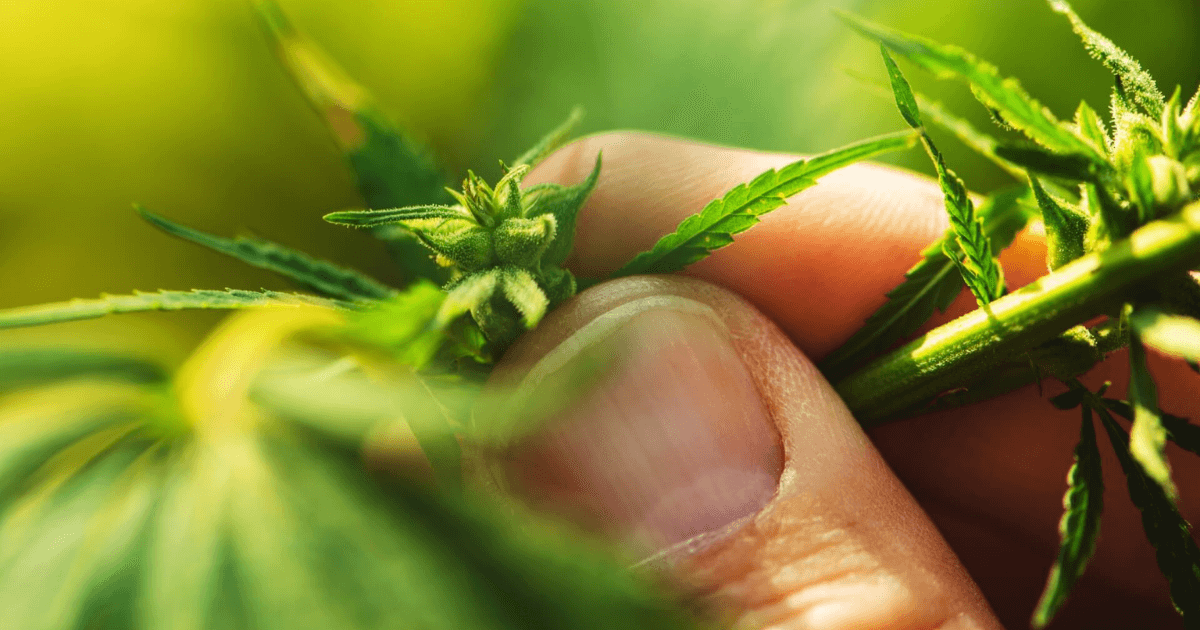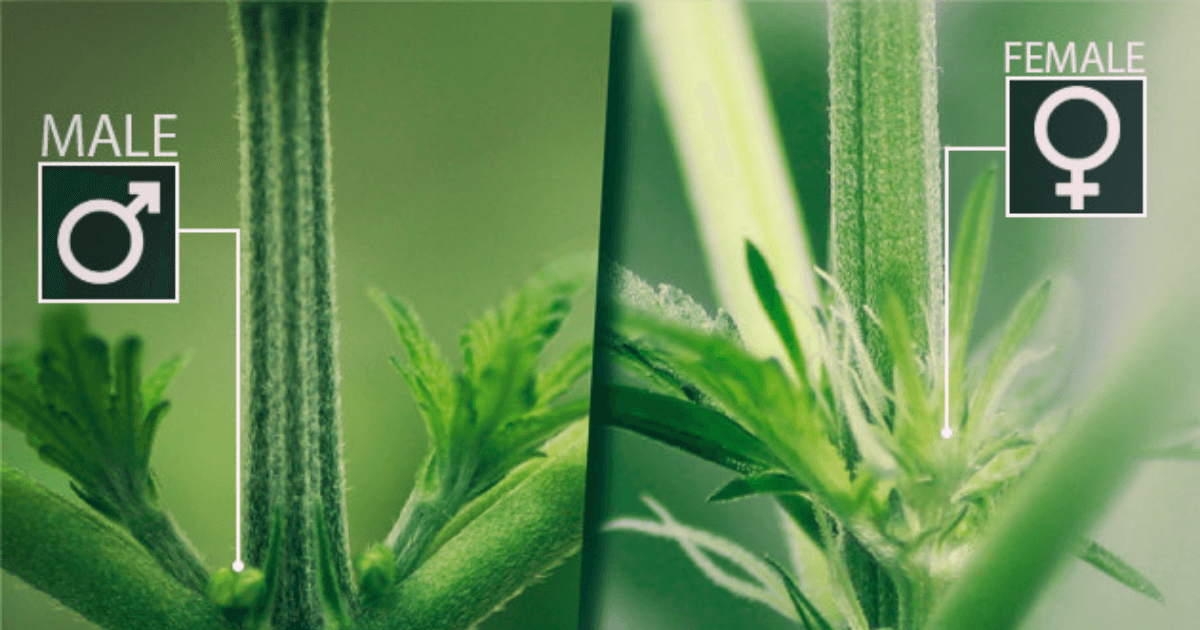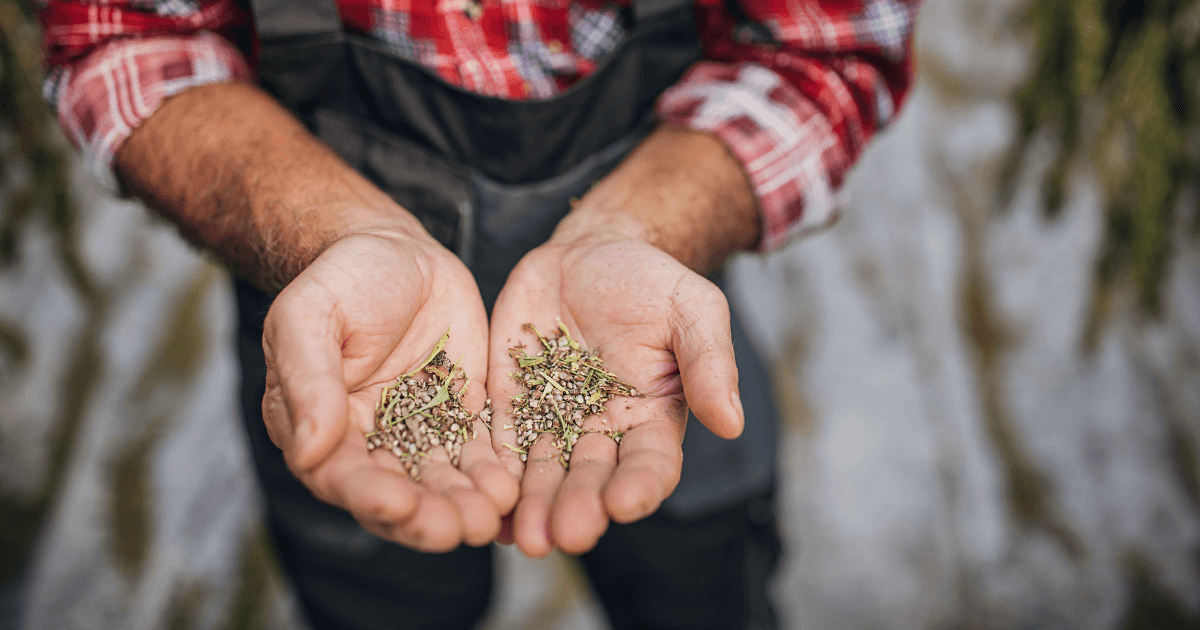Cannabis
Male vs Female Weed: How to Tell if Your Plant is Male or Female Before Flowering?
One of the most important aspects of growing cannabis is identifying the gender of your plants. Female cannabis plants produce the buds that are sought after for their high THC content, while male plants are generally considered undesirable as they do not produce buds and can fertilize female plants, leading to lower-quality buds.
In this article, we will explore how to tell if your cannabis plant is male or female before flowering, including the physical characteristics of male and female plants and the methods for identifying the gender of your plants. Whether you are a seasoned grower or just starting out, understanding the differences between male and female cannabis plants is crucial for a successful harvest.
What is a Cannabis Plant?
A cannabis plant is a member of the Cannabis genus, which includes three species: Cannabis sativa, Cannabis indica, and Cannabis ruderalis. These plants are characterized by their distinct leaves with serrated edges and the presence of trichomes, which are tiny, hair-like structures that contain cannabinoids, such as THC and CBD.
Cannabis plants are commonly grown for their psychoactive and medicinal properties. The cannabis flowers, leaves, and stems of female cannabis plants contain high levels of THC and other cannabinoids, which can be consumed through smoking, vaping, or edibles to produce a range of effects, including relaxation, pain relief, and euphoria.
In addition to their recreational and medicinal uses, cannabis plants have a variety of industrial uses, including the production of hemp fibre, which is used for clothing, paper, and construction materials, and the production of hemp oil, which can be used for cooking and skincare products.
Overall, cannabis plants are a diverse and versatile species with a wide range of uses and applications.
What is a Female Cannabis Plant?
A female cannabis plant is a type of cannabis plant that produces the sought-after buds that are used for their high THC content, as well as other cannabinoids like CBD and terpenes. The female plant’s flowers, also known as buds, are covered in trichomes, which are tiny, hair-like structures that produce cannabinoids and terpenes.
In the process of reproduction, female cannabis plants produce the seeds after being fertilized by male plants. However, many growers prefer to only grow female plants, as they produce the most potent and desirable flowers without the risk of pollination that can reduce the quality of the final product.
Female cannabis plants can be identified by their “pistils,” which are small hair-like structures that protrude from the plant’s calyxes. As the plant matures, the pistils will turn from white to orange or brown, indicating that the plant is ready to be harvested.
Overall, female cannabis plants are highly valued for their potent buds, which have a variety of recreational and medicinal uses. Growers can use a variety of techniques to ensure that their plants are female, such as using Feminized cannabis seeds or taking clones from known female plants.
What is a Male Cannabis Plant?
A male cannabis plant is a type of cannabis plant that produces pollen, which is used to fertilize female plants in the process of reproduction. Unlike female plants, male cannabis plants do not produce the highly desired buds and are therefore considered less desirable for cultivation.
In fact, male cannabis plants are often removed from a grower’s garden to prevent them from fertilizing female plants, which can reduce the potency of the buds and affect the quality of the final product. Fertilization by male plants can also cause female plants to produce seeds, which can be undesirable for some growers.
Male cannabis plants can be identified by their “pollen sacs,” which are small, round structures that develop on the plant’s nodes. These pollen sacs will eventually burst, releasing pollen that can fertilize nearby female plants.
Overall, while male cannabis plants are essential for the process of reproduction, they are not typically grown for their buds and are often removed from the garden to ensure that the female plants produce the highest quality buds possible.
What is the Difference Between Male and Female Marijuana Plants?
The main difference between male and female marijuana plants is their reproductive organs. Male plants produce pollen, which is used to fertilize female plants in the process of reproduction, while female plants produce the highly desirable buds that are sought after for their high THC content.
In terms of physical appearance, male and female marijuana plants also have some differences. Male plants tend to have thicker stems and fewer leaves, while female plants have more branches and leaves, and their buds are covered in sticky trichomes. Female plants also have small hair-like structures called pistils that protrude from the plant’s calyxes, while male plants have pollen sacs that develop on their nodes.
In terms of cultivation, male plants are typically considered less desirable for growers, as they do not produce buds and can reduce the quality of the final product if they fertilize female plants. Many growers prefer only to cultivate female plants or use feminized seeds to ensure that only female plants are produced.
Overall, while both male and female marijuana plants have their role in the process of reproduction, female plants are typically considered more valuable for their buds and are the primary focus of many growers.
How to Tell the Difference Between Male and Female Weed Plants
Here are some ways to tell the difference between male and female weed plants:
- Look for Pollen Sacs: Male plants develop pollen sacs that look like small, round balls on the nodes of the plant. These sacs will eventually burst and release pollen, which can be used to fertilize female plants.
- Look for Pistils: Female plants develop small, hair-like structures called pistils that protrude from the plant’s calyxes. These pistils will eventually develop into the highly desirable buds that are sought after for their high THC content.
- Observe the Plant’s Growth: Male plants tend to grow taller and have fewer leaves and branches, while female plants are generally shorter and bushier with more leaves and branches.
- Inspect the Node: The area where the leaves meet the main stem of the plant, known as the node, can also indicate whether the plant is male or female. Male plants will have a small bump at the node, while female plants will have a more pronounced and clearly defined calyx.
- Use a Magnifying Glass: To get a closer look at the plant’s reproductive organs, use a magnifying glass to inspect the pollen sacs or pistils. This can help you to more accurately determine the gender of the plant.
It is important to identify the gender of your plants early in the cultivation process to prevent male plants from fertilizing female plants and affecting the quality of the final product.
Where to Buy Cannabis Seeds Online?
There are many online retailers that sell cannabis seeds. Here are a few popular options:
- The Seed Pharm: The Seed Pharm is an online seed bank that offers a variety of cannabis seeds, including feminized, auto-flowering, and regular seeds. They offer worldwide shipping and discreet packaging, as well as a variety of payment options.
- Seedsman: Seedsman is a well-known online seed bank that offers a wide selection of cannabis seeds from a variety of breeders. They offer discreet and worldwide shipping, as well as a variety of payment options.
- Crop King Seeds: Crop King Seeds is a Canadian seed bank that offers a variety of cannabis seeds, including feminized, auto-flowering, and high-CBD strains. They offer worldwide shipping, as well as discreet and secure packaging.
- ILoveGrowingMarijuana: ILoveGrowingMarijuana is an online seed bank that offers a variety of high-quality cannabis seeds, including feminized, auto-flowering, and regular seeds. They offer worldwide shipping, as well as a germination guarantee.
It is important to note that laws around purchasing and growing cannabis seeds can vary by country and region, so it is important to research and comply with local laws and regulations before making a purchase. Additionally, it is recommended to purchase seeds from reputable and licensed seed banks to ensure that you are receiving high-quality and viable seeds.
Learn more about cannabis-related topics at BulkWeed.co.
References
- Russo, E. B. (2019). The case for the entourage effect and conventional breeding of clinical cannabis: No “strain,” no gain. Frontiers in plant science, 9, 1969.
- Health Canada. (2020). Cannabis: Legalization and regulation. Retrieved from https://www.canada.ca/en/health-canada/services/drugs-medication/cannabis/laws-regulations.html
- Daily Marijuana. (2023, May 2). Buy Weed Online in Canada. Available at: https://www.dailymarijuana.io/
- Holland, K. (2020, July 20). CBD vs. THC: What’s the Difference? Healthline. Available at: https://www.healthline.com/health/cbd-vs-thc
- National Institute on Drug Abuse. (2020). Marijuana. Retrieved from https://www.drugabuse.gov/drug-topics/marijuana
- Clarke, R. C., & Merlin, M. D. (2016). Cannabis: Evolution and Ethnobotany. The University of California Press.
- The Seed Pharm. (2023, May 2). Buy Feminized Cannabis Seeds Online. Available at: https://www.theseedpharm.com/product-category/marijuana-seeds/feminized-marijuana-seeds/
- Grotenhermen, F., & Müller-Vahl, K. (2012). The therapeutic potential of cannabis and cannabinoids. Dtsch Arztebl Int, 109(29-30), 495-501.



